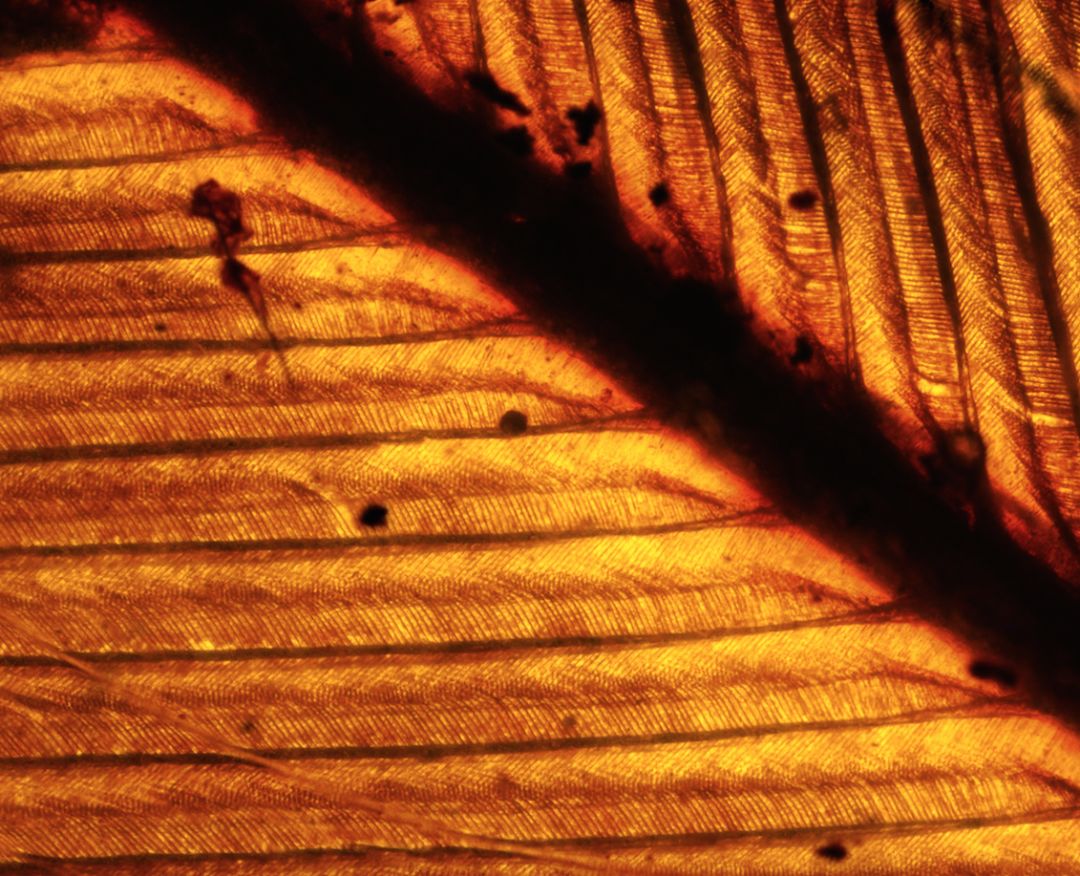History's Lost and Found

Image: David Grimaldi
Do you remember watching Jurassic Park and feeling like you learned something amazing when the family goes through that animated experience about the fossilized mosquito? Well, your dreams of hanging out with T-Rex and that scary-ass black venom sprayer thing are now dashed.
“Ehhhh, no, we’re not there yet,” says Dr. David Grimaldi, entomologist and curator at the American Museum of Natural History in New York regarding technology that will recreate our dinosaur friends.
Grimaldi is in town overseeing his latest curatorial effort, Amber Secrets: Feathers from the Age of Dinosaurs, now open at Houston Museum of Natural Science. The exhibit features more than 100 amber fossils dating as far back as 99 million years. Inside the ambers are keys to the past: feathers, insects and plants stopped in time.
“Some of the best specimens were able to tell a story or had some sort of special scientific significance,” says Grimaldi, who’s been studying this form of history for more than 30 years.
Grimaldi is a detective of sorts, carefully peeling back layers of the world’s ancient history. Back in New York, his selection at AMNH reaches into the thousands, highlighting his obsession with the fossils. Most of the beautiful and intricate pieces come from Burma, a hotbed for amber deposits. For Grimaldi, this is the gift that keeps on giving. “Burmese amber contains quite a bit of diversity with feathers, much more so than any other amber deposit in the world. It’s really unusual why, we don’t know.”
The exhibit also features a 3D printer, etching out prototypes of the heads of ancient ants found inside the amber. One ant is depicted at having tusks, probably for impaling. And it’s these questions and ideas that fuel Grimaldi’s fascination. Also included are various plants like angiosperm leaves.
“We can a lot more inferences about the paleo environment through the plant than we can through anything else,” he says pointing out a specimen, shimmering and backlit in its display case. “Having angiosperms, we have these beautiful flowers in the amber…. You also see liverworts, which can grow on trees, and you only see in wet conditions. So you add up all this evidence and it paints this picture of a very tropical-type of environment.”
So, no dinosaurs in our future—bummer. But, that actually might be the best thing ever. In a glass case, positioned mid-flap, mouth open, teeth showing, is an ancient bird, or something related. Fingers poke out from its wings, giant claws for feet, sharp teeth inside its beak, and hell in its eyes.
“Yeah, you wouldn’t want that flying around,” Grimaldi laughs.
Thru March 26, 2017. $30, adults; $20, children and seniors. Houston Museum of Natural Science, 5555 Hermann Park Dr. 713-639-4629. hmns.org
